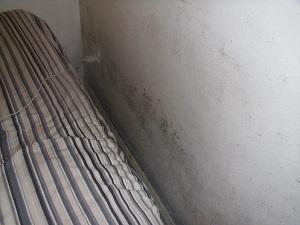Action plan for landlords and property agents
As a landlord or property agent, it is your legal responsibility to take action on any condensation and mould quickly and effectively. This is covered under legislation such as the Landlord and Tenant Act 1985, the Fitness for Human Habitation Act 2018 and the Housing Act 2004.
Use our guide and action plan to protect your tenants from the health risks of damp and mould and avoid costly or lasting damage to your property.
Make sure your tenants know how to report issues
Make sure tenants understand how to report brown damp stains, condensation and mould problems immediately. Landlords and agents should not wait until the problem gets worse, risking their tenant’s health and making issues more costly and difficult to fix.
Create an action plan to tackle the mould and stop it coming back
Condensation Management in Private Homes Inspection form (PDF, 450KB)
Condensation Management in Private Homes Inspection form - Guidance notes (PDF, 380KB)
The tools needed for your action plan:
- Thermo-hygrometer. This device allows you to measure both the air temperature and the amount of water in the air. The ideal humidity level is between 45% and 55% anything above that is causing a problem.
- Temperature strips to find cold spots on the walls
- Inspection form checklist. The council has developed an inspection form which will support you to identify problems. Use it to create an action plan with your tenant to take the right steps to fix the issue. Monthly inspections. Please read the guidance notes when using this form.
Plan six monthly inspections to monitor damp conditions in your property to prevent health risks or it becoming a costly problem.
Give reasonable notice to your tenant and ask them to be present so you can discuss any small issues and prevent future problems. For example, if furniture is blocking air vents or extractors, or bathroom fans are not being used.
Remember properties become more vulnerable to condensation mould from October when air temperature drops.
Ensure your property is protected
Address the causes of water leaks quickly and effectively. Put good condensation, damp and mould prevention measures in place and make sure your tenants know how to use them.
Extractors
Mechanical extractor fans are like having small windows. They extract wet air and vent it outside before it can move around your property and cause mould issues. Fit them in areas where you expect high moisture levels for example the bathroom or kitchen.
There are 3 extractor types:
- basic
- timer
- humdista (these will need to run for a while after showering or cooking stops)
After fitting an extractor, ensure you or the property agent explains to your tenants how to use them and has information about the running costs. If you have fitted extractor fans but tenants are too worried about energy costs or they are too noisy to use, they risk being permanently switched off, and landlords will lose the benefit of fitting them.
Trickle vents and air bricks

Trickle vents and air bricks are openings between the inside and outside of the property. They are useful in ventilating internal wet air. Trickle vents are required in all new windows. They help remove wet air from around the glass, most vulnerable to condensation and mould.
Please be aware that some trickle vents can be closed by hand and ensure your tenant knows to keep them open.
Furniture placement and storing personal belongings
Damp can get trapped behind large, heavy pieces of furniture. To help prevent condensation and mould, internal air needs to be able to circulate around rooms. The air becomes damp in areas where furniture and belongings are placed next to external walls. When placing furniture ensure there is at least a 5mm gap between each item and the wall. Ensure you are not creating a problem for your tenants by blocking air bricks.

What to do if your tenant reports damp, condensation or mould
Take steps to immediately clean away the mould safely to remove potentially hazardous conditions in the home. As a landlord or property agent, it is your responsibility to carry out an inspection to investigate the cause of damp and condensation mould.
